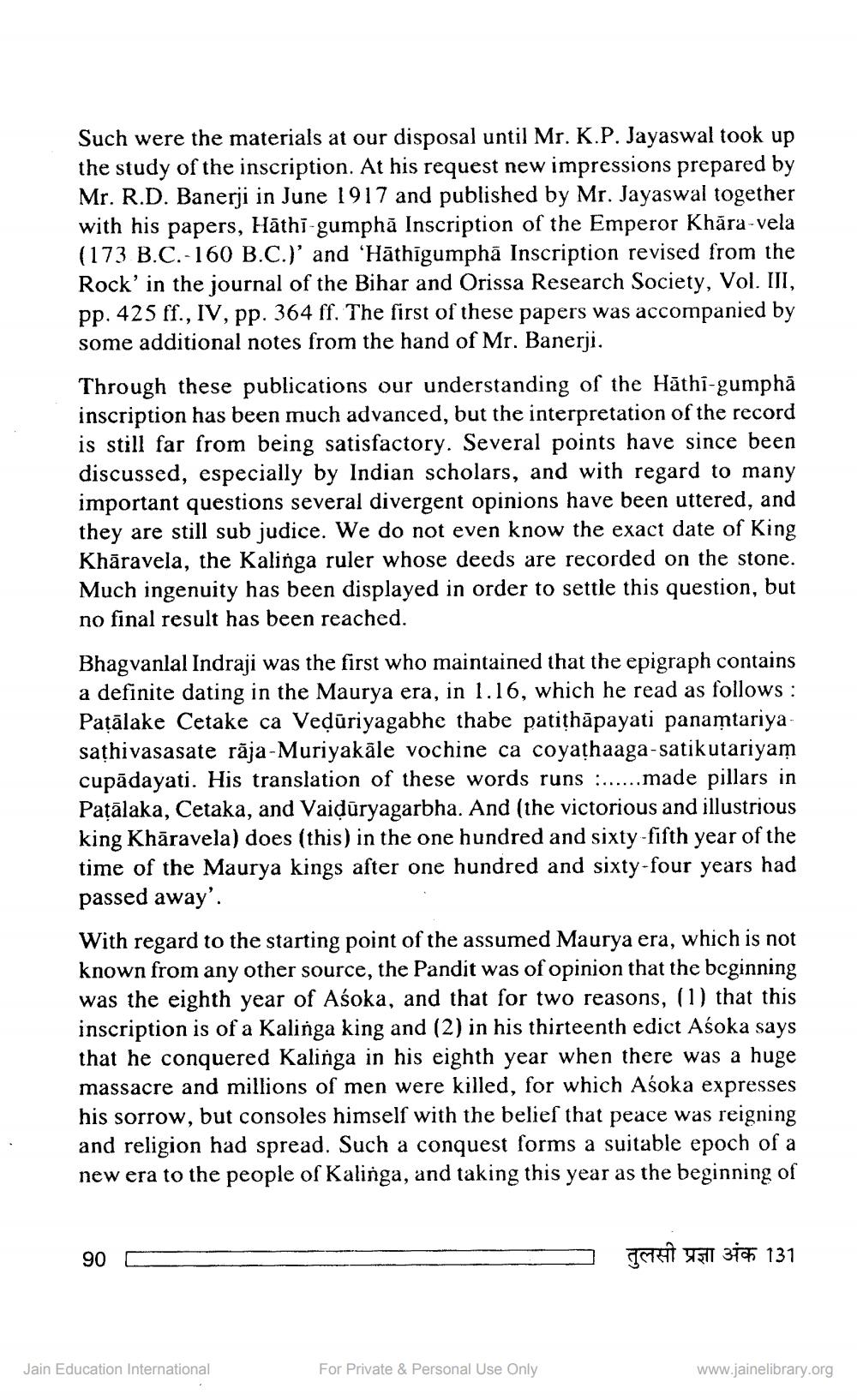________________
Such were the materials at our disposal until Mr. K.P. Jayaswal took up the study of the inscription. At his request new impressions prepared by Mr. R.D. Banerji in June 1917 and published by Mr. Jayaswal together with his papers, Hāthi-gumphă Inscription of the Emperor Khăra-vela (173 B.C.-160 B.C.)' and 'Hāthīgumphā Inscription revised from the Rock' in the journal of the Bihar and Orissa Research Society, Vol. III, pp. 425 ff., IV, pp. 364 ff. The first of these papers was accompanied by some additional notes from the hand of Mr. Banerji.
Through these publications our understanding of the Hăthi-gumphā inscription has been much advanced, but the interpretation of the record is still far from being satisfactory. Several points have since been discussed, especially by Indian scholars, and with regard to many important questions several divergent opinions have been uttered, and they are still sub judice. We do not even know the exact date of King Khāravela, the Kalinga ruler whose deeds are recorded on the stone. Much ingenuity has been displayed in order to settle this question, but no final result has been reached. Bhagvanlal Indraji was the first who maintained that the epigraph contains a definite dating in the Maurya era, in 1.16, which he read as follows: Pațālake Cetake ca Veďūriyagabhe thabe patithāpayati panamtariyasathivasasate răja-Muriyakāle vochine ca coyathaaga-satikutariyam cupādayati. His translation of these words runs :...... made pillars in Pațālaka, Cetaka, and Vaidūryagarbha. And (the victorious and illustrious king Khāravela) does (this) in the one hundred and sixty-fifth year of the time of the Maurya kings after one hundred and sixty-four years had passed away'. With regard to the starting point of the assumed Maurya era, which is not known from any other source, the Pandit was of opinion that the beginning was the eighth year of Asoka, and that for two reasons, (1) that this inscription is of a Kalinga king and (2) in his thirteenth edict Asoka says that he conquered Kalinga in his eighth year when there was a huge massacre and millions of men were killed, for which Asoka expresses his sorrow, but consoles himself with the belief that peace was reigning and religion had spread. Such a conquest forms a suitable epoch of a new era to the people of Kalinga, and taking this year as the beginning of
90
C
-
TA
EI 31 131
Jain Education International
For Private & Personal Use Only
www.jainelibrary.org




